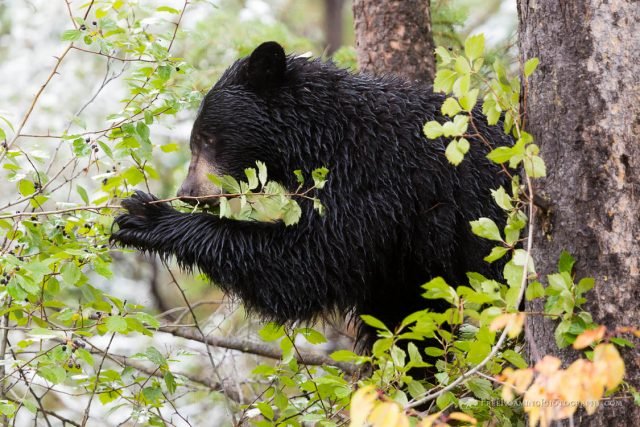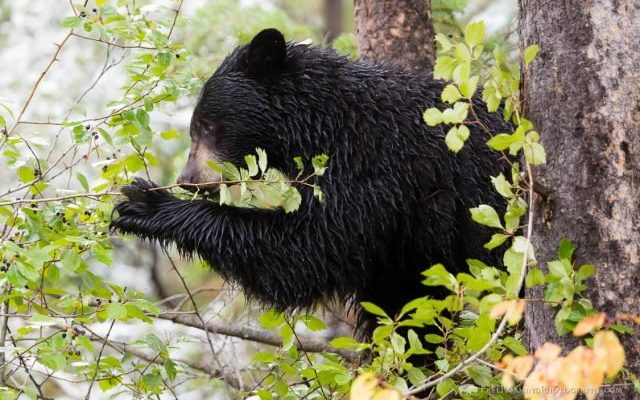
Imagine a bustling city, where each person has a job that helps the community thrive. In the same way, black bears contribute to their ecosystems in significant and often surprising ways. They affect the growth of vegetation, the population dynamics of other species, and even the health of the forests they inhabit. So, let’s dive deeper into the world of black bears and discover just how essential they are to the ecosystems they call home.
What Makes Black Bears Unique?
Black bears are fascinating creatures. They’re the most widely distributed bear species in North America, living in a variety of habitats, from forests to mountains and even swamps. Their adaptability is one of the keys to their success. You might see them foraging for food, climbing trees, or hibernating during the colder months.
Their physical traits make them well-suited for their environments. Black bears have strong limbs and sharp claws for climbing, while their keen sense of smell helps them locate food from miles away. This ability to adapt and thrive in different environments means black bears play different roles depending on where they live. In some areas, they might be the dominant predators, while in others, they fill the role of scavengers, helping to keep the ecosystem balanced.
Seed Dispersers: The Unsung Heroes
You may not think of black bears as gardeners, but they actually help plants grow in some pretty cool ways. When they munch on fruits and berries, they consume seeds, too. But here’s the neat part: not all those seeds stay in the bear’s belly. When they wander through the forest and later do their business, they deposit those seeds in a different spot. This act of “seed dispersal” is vital for plant reproduction.
In essence, black bears promote biodiversity by spreading seeds across the land. They help forests expand and regenerate, allowing for new plants to grow. So, the next time you spot a bear snacking on berries, remember they’re also doing some heavy lifting for the environment.
Impact on Other Wildlife
Black bears don’t just influence the plants around them; they also affect the animal kingdom. As apex consumers, they play a significant role in controlling the populations of other species. For example, when bears hunt and scavenge for food, they help keep the numbers of herbivores like deer in check. Too many deer can lead to overgrazing, which can negatively impact plant life and, consequently, the entire ecosystem.
Additionally, when bears scavenge through carrion, they provide an important food source for smaller animals like birds and insects. This cycle of life is crucial, as it maintains balance in the ecosystem. It’s a bit like a chain reaction; one action leads to another, and each creature has its role in keeping the environment stable.
Nutrient Cycling: Nature’s Clean-Up Crew
You might not think of black bears as clean-up crews, but they definitely fulfill that function in nature. As omnivores, their diet includes not just plants and fruits, but also insects, fish, and even small mammals. By consuming these various food sources, they help recycle nutrients back into the ecosystem.
When they eat and digest their food, their waste products break down in the soil, adding vital nutrients that help plants grow. This process of nutrient cycling is essential for maintaining soil health and promoting plant growth. Without creatures like black bears, many nutrients might remain locked away, limiting the productivity of the ecosystem.
Role in Forest Management
Let’s talk about how black bears also contribute to forest management. As they roam through their habitats, they create trails and clearings. These trails help facilitate the movement of other wildlife, making it easier for animals to find food and mates. Plus, their foraging habits can help control invasive plant species, allowing native plants to thrive.
When black bears dig into the ground to search for roots or insects, they aerate the soil. This natural process helps improve water drainage and root penetration for other plants, leading to a healthier and more diverse ecosystem. They essentially serve as forest engineers, shaping the landscape in ways that encourage a rich diversity of life.
Black Bears and Climate Change
Here’s the thing: black bears are also indicators of the health of their ecosystems. As climate change continues to alter habitats, bears can show us how those changes affect wildlife and plant life. For instance, shifts in berry production due to warming temperatures can impact bear populations and, in turn, affect the ecosystems they support.
Monitoring bear populations can provide valuable insights into the larger environmental shifts happening around them. By understanding these changes, scientists can work towards conservation efforts that help protect not just the bears, but the entire ecosystem they nurture.
Conservation Efforts and Their Importance
With the many roles that black bears play, it’s important to look at conservation efforts aimed at protecting these majestic creatures. Habitat loss, hunting, and climate change pose significant threats to black bear populations. If we want future generations to benefit from the vital roles they play, we need to take action now.
Conservation programs focus on preserving their habitats, promoting coexistence with humans, and researching their populations and behaviors. You might be wondering, “How can I help?” Simple actions like supporting wildlife conservation organizations or advocating for sustainable land use can make a difference. Every effort counts when it comes to preserving these vital members of our ecosystems.
Ultimately, black bears are not just adorable, fuzzy creatures you might see in the woods; they are crucial players in maintaining the balance of the ecosystems they inhabit. They stand as a reminder of how interconnected we all are in the web of life.
In understanding the black bear’s role, we not only appreciate their uniqueness but also the importance of each creature in sustaining our environment. So, the next time you think about black bears, remember their contributions. Aren’t they something special?

